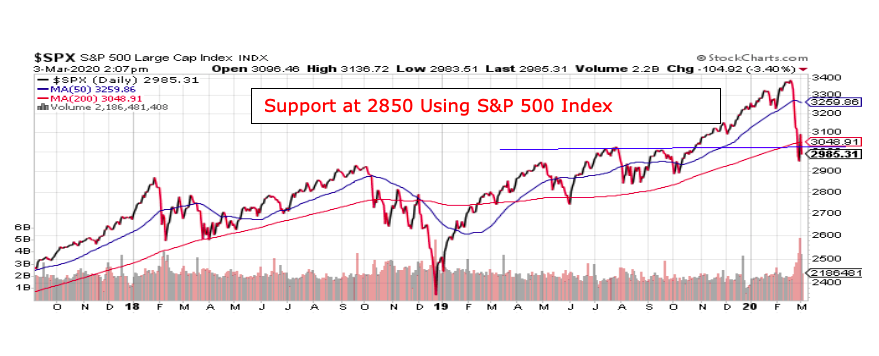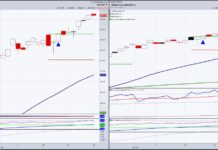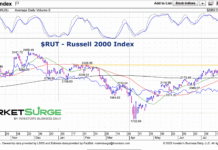
S&P 500 Index Chart – INDEXSP: .INX
The Federal Reserve in dramatic fashion cut the fed funds rate by 50 basis points Tuesday, to a range of 1.00%-1.25%.
Jerome Powell took drastic measures due to widening of credit spreads recently (particularly for high yield).
The Federal Reserve also took into account the drop in inflation expectations with the implication that the real fed funds rate had risen.
With today’s interest rate cut, the real funds rate dropped back to zero. Powell also had discussions with business leaders about the economic effects in travel and other services throughout the U.S. economy.
Entering 2020, we believed that the most bullish move by the Federal Reserve this year would be to raise interest rates. Raising rates would send the message that the U.S. economy was on firm footing.
My concern centered on the likelihood that rate cutting this year would suggest economic conditions were deteriorating. I believed that additional rate cuts by the Fed could be met with investor skepticism and a loss of confidence from the consumer.
I now would look for the Fed to take additional measures; perhaps another quantitative easing package could be implemented should stocks continue to trade lower.
The Fed is obviously attempting to keep the markets from moving into panic mode and usually they are effective. But various Fed officials are on record expressing their skepticism that direct economic effects of a rate cut will be limited. The central issue is will the virus be a short-term disruption or create long-term disturbances in the economy.
Given the health and economic uncertainty, we continue to rely on the technical indicators to offer evidence that the steep decline in the stock market has run its course and become exhausted. My focus was on the quality of inevitable rallies that would need to include a bullish breadth thrust as evidenced by advancing volume exceeding declining volume by a ratio of 10-to-1 or more.
Monday’s record rally by the Dow Industrials failed in that regard with only 4X upside volume versus downside volume. Until such time that the downside momentum is broken, I continue to encourage investors to be patient and not rush to buy until we have solid evidence the decline has run its course.
I would also point out that historically, after a good bottom and subsequent rally (like yesterday) the market normally retests the lows. Data from Ned Davis Research shows a retest occurs 90% of the time. The caveat we would add is that in the era of computerized trading robots don’t necessarily act like humans.
Nevertheless, it would be prudent to watch the technical indicators for confidence that harsh selling has become exhausted.
Twitter: @WillieDelwiche
Any opinions expressed herein are solely those of the author, and do not in any way represent the views or opinions of any other person or entity.








